Fix Android Disabled by Administrator Encryption Policy
If you receive a message indicating that removing screen lock is currently disabled by administrator encryption policy, there are a few effective methods you can apply to easily overcome this system error.
Data protection is significant for every user, and most of us have some security mechanisms safeguarding our smartphones. It’s good to have total control over the device, so it’s easy to understand the frustration of users who face system restrictions when they wish to change the way how they lock the screen, or completely remove a password, pattern, or PIN. No matter how many times you try to change phone setups, the system informs you that that action isn’t allowed. More precisely, you will receive a message ‘disabled by administrator encryption policy’.
This can be very discouraging and frustrating, but it’s an obstacle that can be overcome with the right approach. Since most Android users have never dealt with an issue of this kind before, this article might provide detailed steps on how to get around this problem.
What is Disabled by Administrator Encryption Policy?
There is a common system issue on Android phones that can be very frustrating for owners who want to control security settings. It typically occurs when you decide to change the method of locking your Android and enable none screen lock. At that point, the Android system will send a message with the text: “disabled by administrator encryption policy or credential storage.’’
There are three possible reasons why this system issue appears:
- Some Android phones don’t allow the user to remove all types of locks.
- Certain apps have administrator privilege on your Android. These apps can prevent you from changing lock settings and frequently hinder other actions.
- Having encrypted data on your device might eliminate the option to remove the screen lock. This is a way to protect encrypted data and prevent any possibility of unauthorized access.
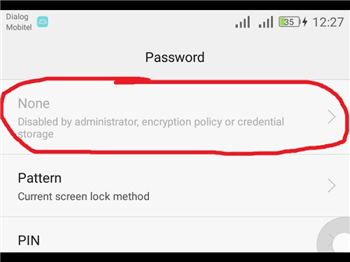
Android Disabled by Administrator Encryption Policy
If you are facing this problem right now, you don’t need to lose any sleep over it. Simple and effective methods for skipping over this obstacle exist and are not hard to execute at all.
How to Remove the Encryption from Lock Screen
1. Disable Apps with Administrator Rights
Built-in and third-party apps sometimes have administrator privileges on your smartphone. These apps have an impact on many different aspects of phone use, such as modifying or deleting data, changing the settings, etc. Since most of this happens in the background, the user generally becomes aware of this situation only when certain actions are denied.
Find My Phone can help you with removing or uninstalling such apps or extensions that block you from changing the screen lock on your Android smartphone. Here is how to do it:
Step 1: Visit the Settings menu and then navigate to the Security section.
Step 2: Open Device Administrators or Device Admin Apps.
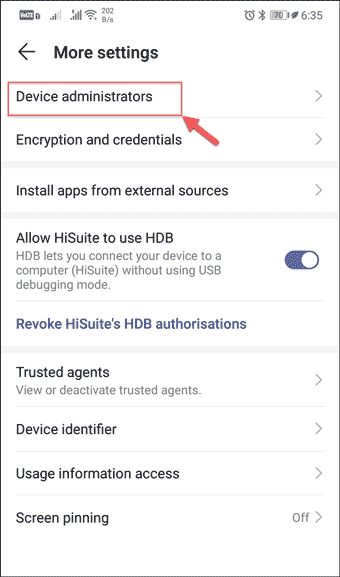
Open Device Administrators
Step 3: In this location, you will see a list of apps that have administrator privileges. You can disable all unnecessary apps by clicking on the mark button next to them.
Step 4: The system will ask you to confirm your action. Tap on the Deactivate button again to do it.
2. Clear Credentials on your Android
After you clear the credentials on your mobile phone, you will be able to change settings for the screen lock in any way you desire. This action doesn’t harm your device and does not affect any other settings. Just follow the recommended steps to achieve this:
Step 1: Go to Settings and then choose Security.
Step 2: Open the Credentials option in the Security section. If you don’t find it there, check the Advanced option.
Step 3: Tap on Clear credentials to remove currently used credentials.

Tap on Clear credentials
Step 4: Confirm your action by pressing the OK button.
3. Decrypt Smartphone Data
As you could learn from the above, encrypted data can put you in a position where you can’t completely control phone setups. To prevent this and avoid seeing the dreaded ‘turned off by administrator encryption policy’ message, you should decrypt smartphone data in the following way:
Step 1: In the Settings menu, you need to find Security.
Step 2: Scroll until you see Encryption and open this menu.
Step 3: Click on Decrypt phone or Decrypt SD card, depending on the location of data.
Step 4: Confirm the action you take and wait for the phone to finish the process.
Once you complete the procedure and ensure that you can control phone settings without seeing the disabled administrator encryption policy message, you can decide which type of screen lock you want to set up. We will show you the required steps for removing any type of lock from the device.
How Do I Fix Disabled by Administrator Encryption Policy?
Except for the above methods you can try to fix disabled by administrator encryption policy or credential storage, there is still a way to solve Android screen lock none disabled by administrator. It is called DroidKit, a complete Android solution that can fix disabled by administrator encryption policy.
Because it can first fix various AndroidOS issues on Samsung models, and, it provides you with Screen Unlocker to unlock any Android phone. So, you can easily enable no password or screen locks on Android. Check the steps below to fix the screen lock disabled by administrator Samsung:
Step 1. Get the latest version of DroidKit on your computer. Launch it, and you will see what can it do for you. Tap on System Fix, which helps you to fix system issues like Samsung black screen, Samsung stuck on logo, etc.
Free Download * 100% Clean & Safe
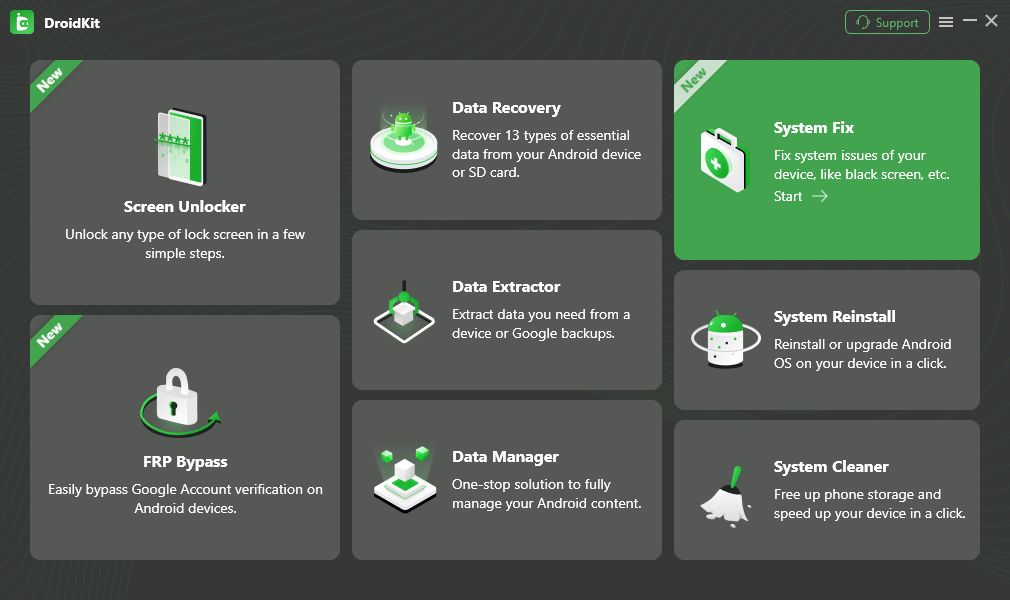
Click System Fix Function
Step 2. Connect your phone to the computer with the USB cable and continue.

Start to Repair Samsung Phone
Step 3. Click Download Now to get the matching firmware package, then click on Fix Now.
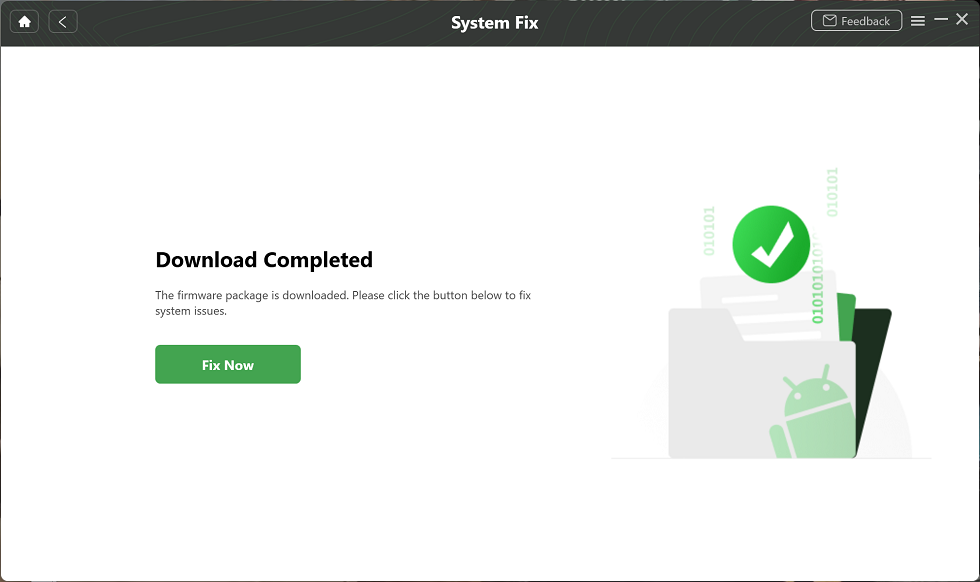
Firmware Downloaded and Click Fix Now
Step 4. Follow the on-screen instructions to enter Download mode. Later, DroidKit will start preparing automatically.
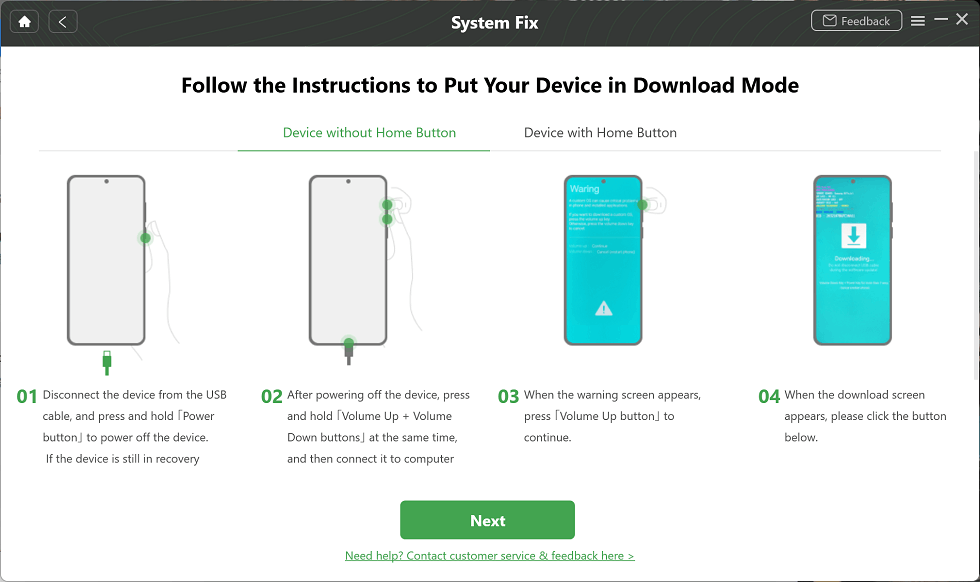
Put Samsung into Download Mode
Step 5. Wait a while, you will get the System Fixed Successfully page as below.
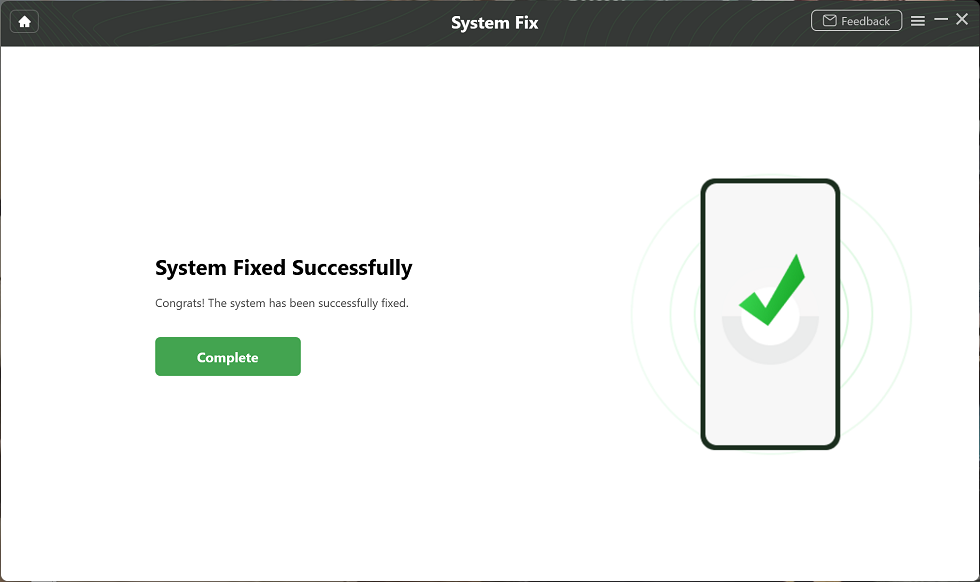
Completing the Repair Process
How to Enable None Screen Lock in Android
Step 1: Open the Settings menu on your Android device.
Step 2: Select Security from the menu.
Step 3: Click on the Screen lock option. You will see several possible settings for screen locks (password, pattern, face recognition, and more). The exact range of options depends on the device and operating system you have.
Step 4: Click on None in the shown list, and after that, your phone won’t use any security mechanism to lock the screen.
Final Thoughts
We know how stressful it can be when you see an encryption policy note on your screen. Having all answers about this system error can save you from this predicament and allow you to set any type of lock you want or none at all. The recommended techniques require only basic technical knowledge, so you can easily try them out from your living room, without any professional assistance.
Product-related questions? Contact Our Support Team to Get Quick Solution >

